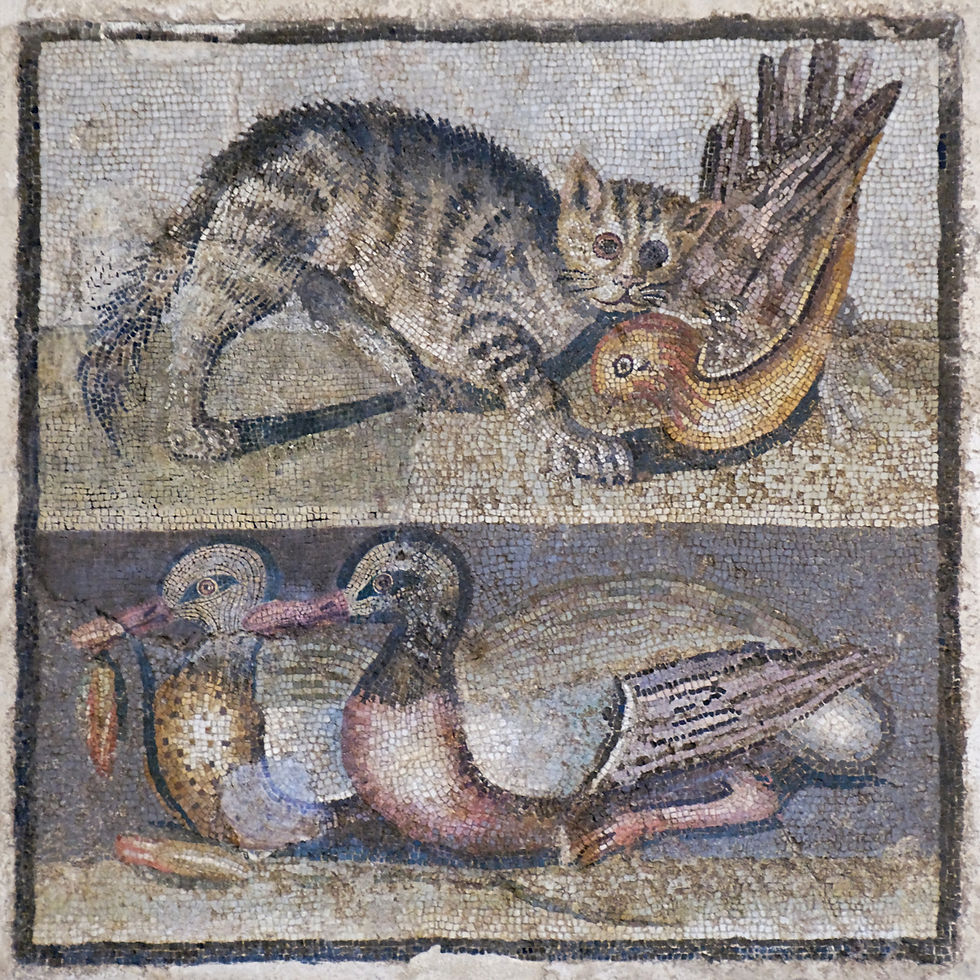The Difference Between types and Styles of Micromosaics
- citrinette
- Aug 1, 2024
- 4 min read
Updated: Aug 2, 2024

This is a topic that is quite complicated but I feel compelled to address. There seems to be a lot of confusion around terminology for micromosaics, so I thought I'd ramble a bit on the topic to see where that gets us.
The term micromosaic is said to be coined by Rosalinde and Arthur Gilbert of the Gilbert collection at the Victoria & Albert museum in London. The technique was indeed that of mosaic but on a tiny scale in comparison to ancient or even contemporary mosaics made of stone or glass in the style of Roman or Byzantine mosaics, thus the name micromosaic. In Italian the terms used for this technique are micromosaico, micromosaico minuto romano and micromosaico filato.
In English however there seems to be one term for a variety of different things hence this post.
As far as many Italian mosaic experts are concerned a micromosaic (micromosaico) is anything with tesserae (individual elements of a mosaic) anywhere from 3mm or less. This means that there are Roman era micromosaics (1st Century BC-5th AD), in this case technically called Opus Vermiculatum because the tesserae are 3mm or less.

Let's talk about Filato micromosaics. Filato micromosaics started in the late 1700s or early 1800s. As mentioned in the History of Micromosaics section of my site, micromosaics were a solution to the Vatican's problem of deteriorating paintings. The mosaic artists had to come up with a way to imitate brush strokes so they started melting the same glass used in traditional mosaics to make filaments to the use the cross section of as the visible part or top of the tessera. These mosaics often have tesserae that are well below 3mm, in fact the sizes in diameter of the tesserae are often fractions of a millimeter and it is often hard to recognize it is a mosaic rather than a painting. These filato micromosaics were ground down and polished to a fine mirror finish and given a coloured wax grout to hide the gaps.


In both the examples above the mosaics were ground down and polished. These micromosaics, whether applied to jewellery or a table top, were made in Rome and are called filato Micromosaics, minute Roman mosaics or miniature Roman mosaics (micromosaico minuto Romano). The more tesserae they have per square centimeter the more valuable they are.
Another distinguishing factor is whether or not they have what we call mixed tint filati. These are filati that have been pressed together while hot creating a material with multiple colours. This was a practice that came about later in the history of filato micromosaics. It started around 1825 and can therefore help date a filato micromosaic.
The following example is a closeup detail of a brooch in my private collection. As you can see it has a series of mixed tint filati.


The following micromosaic is another in my collection. As you can see the details are larger, The mixed tint tesserae are very large (the columns) and the execution is quite chunky compared to the landscape above. These are both filato mosaics, both are polished and have a coloured wax grout, however their value and sales point will be (and should be!) very different.

There is one more type of micromosaic I'd like to mention. The following brooch and picture frame are both considered micromosaics since the tesserae are 3mm or less. However they were not produced in Rome, rather probably Florence or Venice. They are much later in production, probably mid to late 1900s. The materials used to make these mosaics are currently industrially produced.


These are basically a mass produced version of filato mosaics and their value should reflect that. They are not particularly expensive and are often sold under €100.
I am finding it challenging to define a terminology for these items for a few reasons. Firstly, because the techniques used are the same as those for traditional filato mosaics. The materials are scored, snapped, and then meticulously placed into stucco using tweezers. The filati themselves are crafted in a similar manner. However, these small flowers and leaves are often referred to as murrine (perhaps inaccurately), as they have their origins in Murano, an island known for glass production near Venice. Murrine feature multiple colors and are typically designed with floral patterns. They are formed into rods which are later cut and fused together to create a variety of glassware designs.


It is crucial to note that these materials have been manufactured on an industrial or semi-industrial scale for many years. While they are typically not handmade, it is feasible to create them manually, which can sometimes blur the distinction between the two.
I have had numerous conversations about these types of mosaics and have discovered that some antiques appraisers have started distinguishing between types, calling the roman minute mosaics or filato mosaics (as seen in the landscape brooch in my collection) Micromosaics while the chunkier floral designs (as seen in the brooch and frame) are being called mosaic jewellery or mosaic frame.

I'm not sure this is the correct distinction to be making. I find it much better to refer to these under the terms Filato micromosaic and micromosaic. In my opinion it much better describes the work following Italian terminology considering the techniques are Italian techniques and the terminology used here is more precise.
What are your thoughts? Let me know in the comment section!



Comments